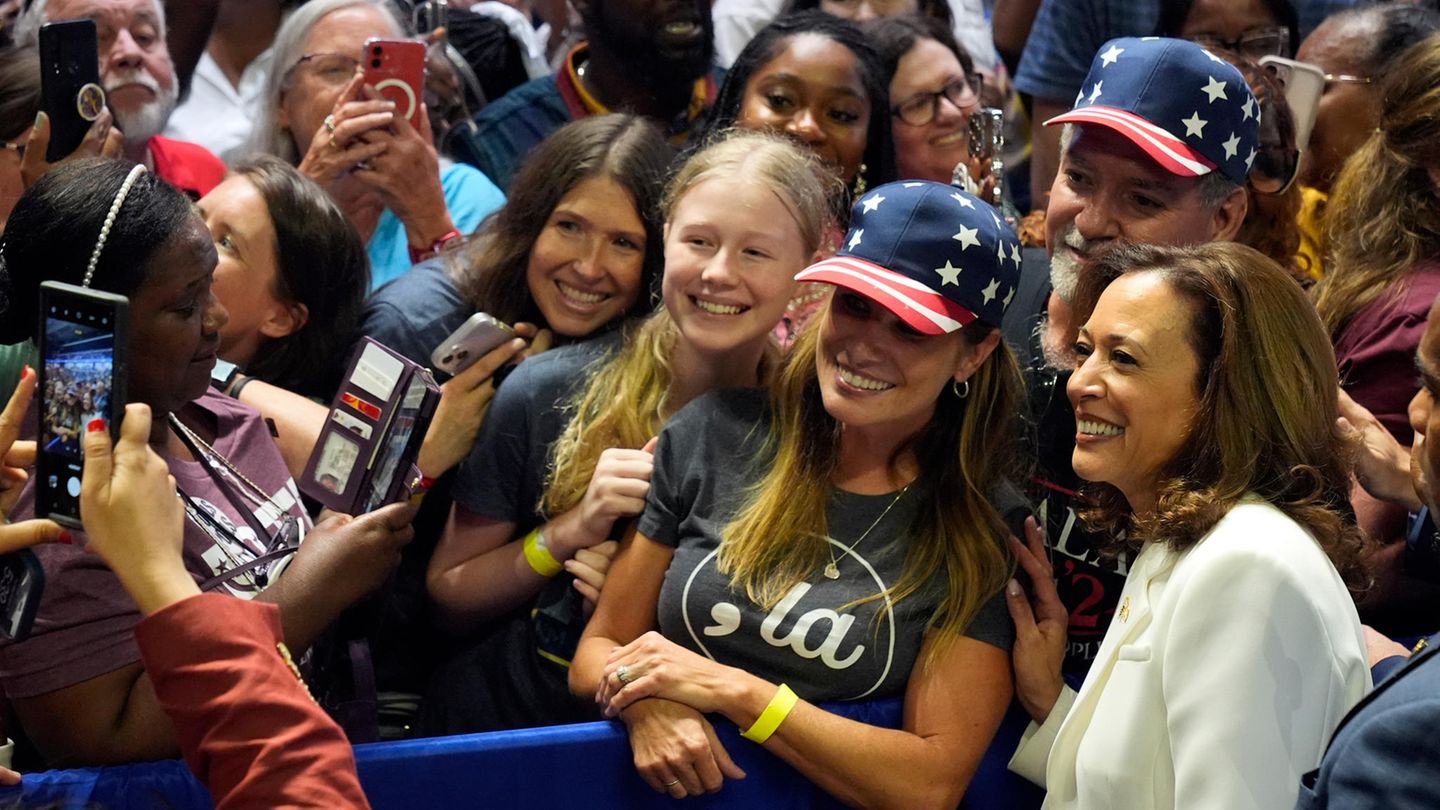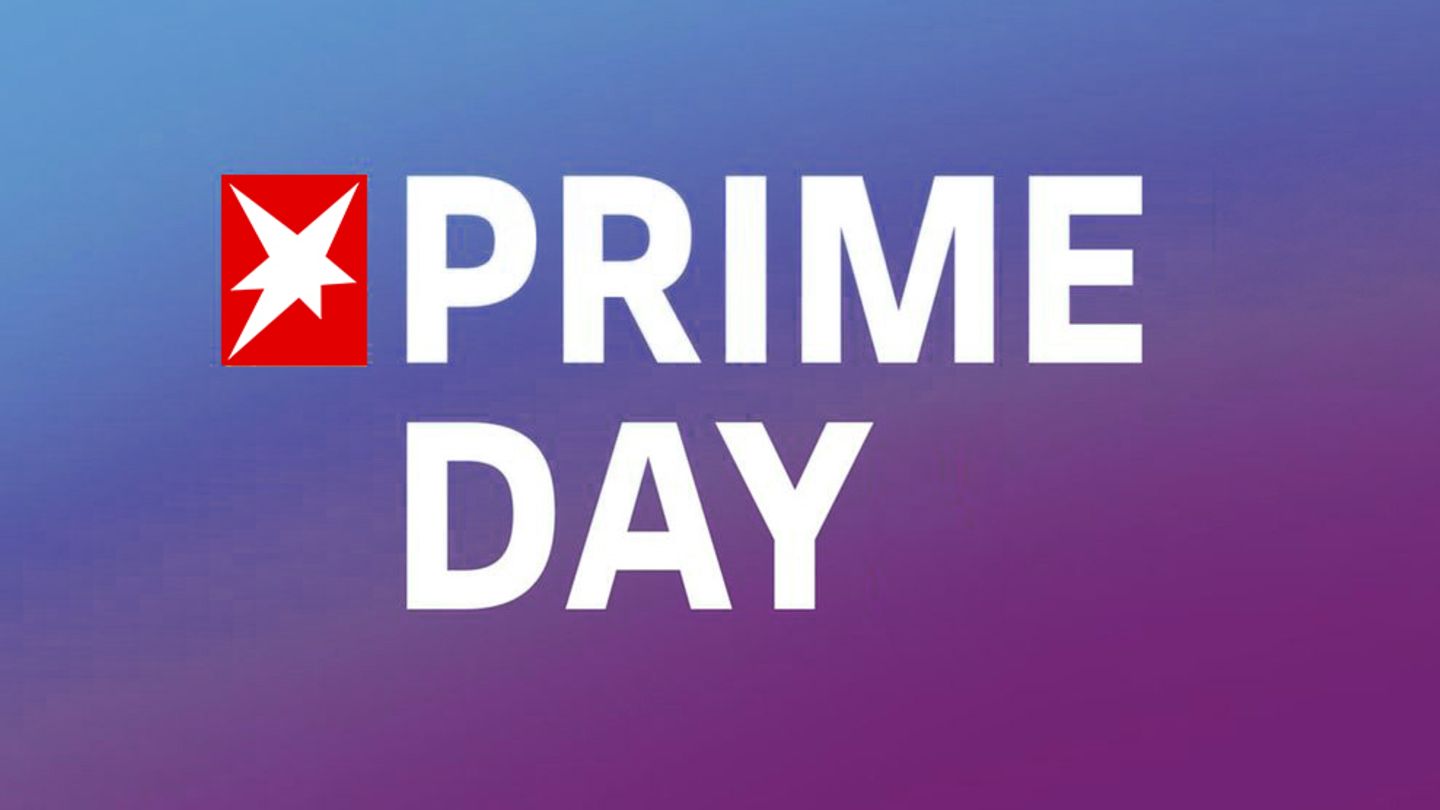Charles Franklin is considered one of the best pollsters in the world. He warns that Kamala Harris’ good ratings should not be overestimated – the polling business is becoming increasingly difficult.
Professor Franklin, what is the current situation in the race for the White House?
In our last poll, Kamala Harris and Donald Trump were tied, but that was before the convention. According to and , Harris currently has a narrow lead.
Do you base your information on these two news sites?
Both calculate the average values of all polls. RealClearPolitics also includes the surveys of some conservative institutes and gives Harris a lead of 1.5 percentage points. 538 is more selective, only takes the high-quality polls and comes up with a lead of a good three percentage points. We are somewhere in between right now.
© Jan Christoph Wiechmann
To person
Charles Franklin is responsible for the survey of Marquette University Law School in Milwaukee, Wisconsin, which is considered one of the best in the United States.
Would that be enough to win for Vice President Harris?
It’s not the “popular vote” that counts, i.e. the total number of votes, but the victories in the individual states. I would like to point out that Biden won the last election by 4.4 percentage points, with 82.3 million votes to Trump’s 74.2 million, and yet it was a close call in the decisive states. At the core, everything revolves around seven contested states, and the situation there is currently very mixed. Here in Wisconsin, Harris has a slight lead.
Can Harris still win all seven states?
Georgia is certainly the most difficult, as are Nevada, North Carolina, the states in the Sun Belt, in the South. Until recently, Trump was leading in all seven swing states. I would have told the Democrats: concentrate exclusively on the so-called Blue Wall, on the three states in the Rust Belt – Wisconsin, Michigan, Pennsylvania, all the others are out of reach. But at the moment they also seem to be within reach again.
Is this just because of the change from Biden to Harris?
Kamala Harris has done everything right so far. A smooth transition. A good choice with Tim Walz as vice president. A good party convention. A good speech. She hasn’t had a single bad news cycle in six weeks. There is this exuberant enthusiasm among the Democrats, but the cool look tells me: It would be foolish to believe that it is more than a neck-and-neck race. And Harris will not remain flawless. The next big test is the TV debate on September 10th.
The survey conducted by their university, Marquette University Law School in Milwaukee, is considered one of the three best out of more than 500 in the country. They are the only ones who specialize in the all-important swing state of Wisconsin. Why?
It’s simply too expensive. No local media can afford it, except the big ones: CNN, Fox, the New York Times, ABC. But they don’t have the local expertise that we have.
What do you do differently?
First of all, I have to admit: we were also wrong about Trump’s sensational victory against Hillary Clinton in 2016. Not as bad as other institutes, but still by six percentage points. It was the biggest mistake in our history.
Others were off by up to ten percentage points. What was it like in 2020?
In 2020, we were also four percentage points short, but we had the right winner: Joe Biden.
Biden won the state of Wisconsin in 2020 by only 20,000 votes, less than one percentage point. Most institutes put him six percentage points ahead of Trump.
We have learned from this. On average, our polls are only off by 2.2 percentage points. We always do very well in the midterm elections. But whenever Trump is on the ballot, it is different.
What exactly did you learn?
In 2016, we simply didn’t reach enough white Trump voters in the polls. We had the right number of Republicans, but not Trump supporters.
And 2020?
2020 went a little better, but even then we didn’t reach enough Trump supporters. Trump also does well among independents and apolitical people who are anti-government, anti-elite. And they are the last people to answer polls.
How do you conduct your survey now?
First of all, we take our time, we don’t rush things. We have always taken educational background into account, and even more so today, because it is more important than ever. People without a college degree used to vote evenly, but today they are clearly pro-Trump. Today we go through the lists of registered voters in every single district. We know how often they voted and in which primaries. In the past, we called people randomly in a district. Today, we have microdata and break each district down into urban, rural and suburban areas. In the past, we only went to five regions in Wisconsin, but now we go to all 90 districts.
Are you still calling the participants?
That has also changed. Nobody answers the phone anymore. The response rate is low, at two percent. Today we mainly send SMS and emails with a link to the survey. 80 percent of the surveys take place online. People don’t feel that their privacy is being disturbed so much on their cell phones or tablets. But even then the response rate is only four to five percent. It’s a difficult business.
They say Trump voters refuse to participate in polls because the elite are behind them. So how can you even do representative polls anymore?
It is still difficult to get Trump voters. Many hang up immediately. Some say: I’m not talking to you, you communist.
That’s probably a Trump voter. Will he be registered as such?
No, we couldn’t ask the questions.
So do you reserve a percentage for this category of unreachable Trump voters, say five percent?
No, that would be unscientific. We have to look for the actual answers. Anything else contradicts the principles of science.
But that will always underestimate the proportion of Trump voters. Isn’t that what you’re doing at least in your head?
In the last election, Trump’s Republicans were four percent behind in our poll. Subjectively, I thought: Well, that could be just one percent. But the result was closer to our poll than to my subjective estimate.
Wisconsin is considered a “tipping point” state. Is that true? Everyone is looking at Wisconsin.
That’s right. In the last elections in 2016 and 2020, this was where the narrowest margin was. And just as Wisconsin flipped, Michigan and Pennsylvania also flipped, with larger margins.
So in Wisconsin, Harris is slightly ahead in the polls. And in your subjective assessment too?
It’s a neck-and-neck race. The state will probably be decided again by less than one percent. Everything is very evenly balanced here. The Democrats are better organized and have more money, but there are more registered Republicans, 32 to 29 percent. The Republicans are extremely motivated by Trump, but so are the Democrats now under Harris.
How big are the regional differences within the state?
Very big and they are getting bigger and bigger. The city of Milwaukee is blue, so Democratic, but the constituencies around it are red. These suburbs are slowly becoming bluer. But the country is becoming more and more Republican. So everything is balancing out again. There used to be a lot of Democrats in the rural west and north, but they are becoming increasingly rare. And you can see this right down to the smallest villages. There are now only tiny blue islands in the deep red.
So a further polarization of society?
Exactly. That will probably continue. I also don’t see the popular Tim Walz getting a foot in the door for the Democrats. If Trump manages to motivate just a few thousand more voters in rural areas, just five percent, that could be enough for him to win the state. He can then make up for everything he loses in the suburbs, where the more educated people live.
Who is Trump losing here?
Mainly women, as we found in our survey. Young voters too. And people of color. But there aren’t many of them in our state. Only five percent are black, and even fewer are Hispanic. We are the least mixed state of all the swing states. And unlike Pennsylvania, for example, we don’t have two large metropolitan areas.
In the media, one gets the impression that everything is going well for Harris right now.
Harris is narrowly ahead, but I don’t see Trump falling behind. First, there’s still the debate. Second, Harris is bound to make a mistake at some point. And according to our polls, Trump has a big advantage on the most important issue: the economy, especially inflation. And on the second most important issue: migration.
The numbers are improving. The inflation rate is falling.
That’s right. Real incomes are also rising. But people don’t feel it, they don’t believe it. Harris can’t say: look at the numbers. They just don’t feel it. Prices are still high. They’re not going down. They’re just not rising as much as they used to.
The same is true at the border: the number of migrants has dropped sharply since Biden implemented his executive order in May.
But in the previous three years of his administration, things were different. Harris is very vulnerable there too. I watch Trump’s speeches in Wisconsin in full, that’s part of my job. In the city of Green Bay, he did that very effectively. He linked the bad economy directly to uncontrolled immigration and then added high crime. The facts were wrong, but it was very effective. If he sticks to that message, it will be difficult for Harris.
But Trump keeps drifting off topic in his speeches.
Exactly. He gets lost and says things that are completely absurd. Everyone advises him to stick to the message and leave out the insults.
What else speaks against Trump according to your survey?
His old age. 59 percent think he is too old. And 55 percent think he was rightly convicted in the criminal proceedings.
What is the right strategy for both parties in the final stretch? To motivate their own base to get a few thousand more voters to the polls? Or to fight for the middle, the independents?
Both, but resources are limited. In Wisconsin, voter turnout is very high, 90 percent among registered voters. It’s so high that there are very few non-voters left. But going to the voters in the middle and finding them is very difficult, very expensive. That’s maybe 10,000 voters.
Unless you focus on the big message, like Harris is doing right now: patriotism. National security. Law and order. Strengthening the middle class.
She did well, but now it remains to be seen how far she will actually get. 20 percent of Republicans are critical of Trump. Six percent have defected to the Democrats. 14 percent do not like Trump but cannot decide on Harris. At the moment she is losing these and the independents.
What are the next milestones?
The TV debate. We’ll know more after that. Our next poll will come out after that and will reveal a lot. I would be very surprised if Harris gets a big lead.
Do you advise the parties?
Absolutely not. We are independent. I take part in discussions, I give my opinions, but I would never allow myself to be manipulated. I try to stay away from politicians. It is no fun being around them.
Source: Stern
I have been working in the news industry for over 6 years, first as a reporter and now as an editor. I have covered politics extensively, and my work has appeared in major newspapers and online news outlets around the world. In addition to my writing, I also contribute regularly to 24 Hours World.




